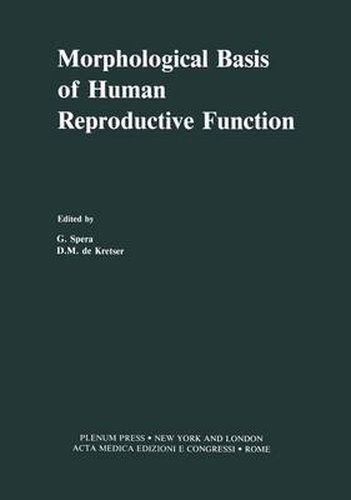Readings Newsletter
Become a Readings Member to make your shopping experience even easier.
Sign in or sign up for free!
You’re not far away from qualifying for FREE standard shipping within Australia
You’ve qualified for FREE standard shipping within Australia
The cart is loading…






Reproduction is, it would appear, a very simple biological event: the result of an act of love. In actual fact, it has always been, and still continues to be, one of the most complex, yet at the same time, most fascinating, problems, with which Science has ever been engaged. Physiopathology of human reproduction has always made use of investigations of a morphological nature, perhaps on account of the need to see inside the reproductive apparatus or within the gonads themselves in order to better understand how they function. Observation of spermatozoa practically coincided with the discovery of the microscope, and histological study of the testis and ovary was, for a very long time, the only means available with which to closely follow the evolution of gametes destined to their meeting. Improvement of techniques resulting from the evolution of endocrinology of reproduction has only apparently put aside morphological techniques, whilst at the same time there has been a gradual development of ultrastructural techniques, on the one hand, and, on the other, macroscopic diagnostic systems through images.
$9.00 standard shipping within Australia
FREE standard shipping within Australia for orders over $100.00
Express & International shipping calculated at checkout
Reproduction is, it would appear, a very simple biological event: the result of an act of love. In actual fact, it has always been, and still continues to be, one of the most complex, yet at the same time, most fascinating, problems, with which Science has ever been engaged. Physiopathology of human reproduction has always made use of investigations of a morphological nature, perhaps on account of the need to see inside the reproductive apparatus or within the gonads themselves in order to better understand how they function. Observation of spermatozoa practically coincided with the discovery of the microscope, and histological study of the testis and ovary was, for a very long time, the only means available with which to closely follow the evolution of gametes destined to their meeting. Improvement of techniques resulting from the evolution of endocrinology of reproduction has only apparently put aside morphological techniques, whilst at the same time there has been a gradual development of ultrastructural techniques, on the one hand, and, on the other, macroscopic diagnostic systems through images.